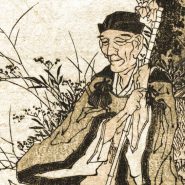By John Milton (c. 1645)
Hence loathèd Melancholy,
Of Cerberus and blackest Midnight born,
In Stygian cave forlorn…
Haste thee, Nymph, and bring with thee
Jest and youthful Jollity,
Quips and Cranks and wanton Wiles,
Nods and Becks and wreathed Smiles…
And every shepherd tells his tale
Under the hawthorn in the dale.
Then to the well-trod stage anon,
If Jonson’s learned sock be on,
Or sweetest Shakespeare, Fancy’s child,
Warble his native wood-notes wild.
Originally published in Poems (1645) by John Milton. Public domain.
Analysis
Paired with “Il Penseroso,” this ode praises the cheerful life — music, theater, country mirth — as a legitimate school of virtue. The poem moves from banishing Melancholy to invoking Mirth, assembling a festival of English culture where pastoral song and city stage coexist. Milton’s triple alliterations and bright catalogues enact the very delight they extol.
Yet “L’Allegro” is more than mood-piece. It argues that joy trains perception, that festivity can civilize the heart without dulling judgment. The celebration of Jonson and Shakespeare locates delight within tradition, not mere whim, making pleasure a disciplined art.

